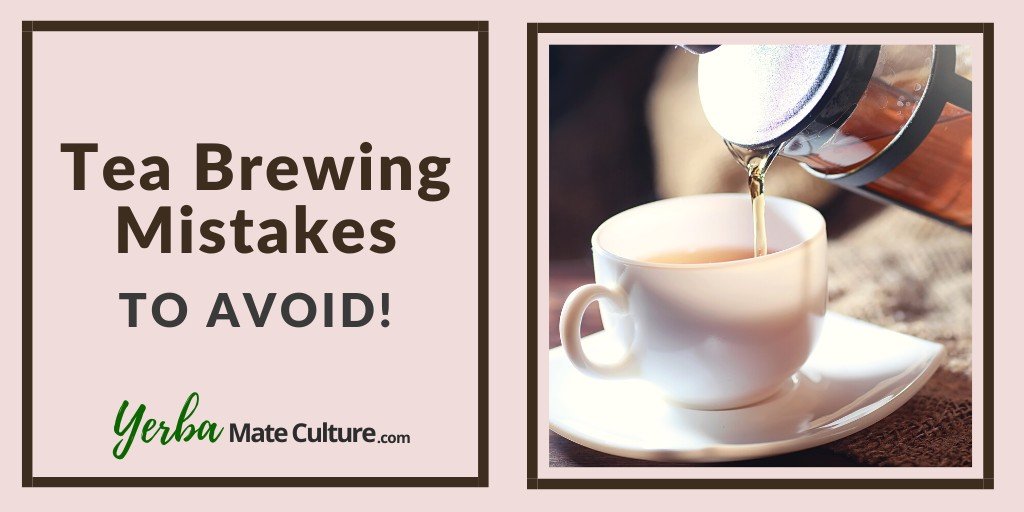Tea, in its essence, is a simple pleasure, yet it’s surprisingly easy to go astray in the brewing process. From the green valleys of Darjeeling to the ancient tea houses of China, the secrets of the perfect cup have been guarded and passed down through generations.
In this guide, we’ll navigate the delicate nuances of tea brewing. I’ll explain how to avoid the common pitfalls and help bring your tea experience from mundane to extraordinary!
Whether it’s choosing the right water temperature, understanding the importance of timing, or selecting and storing your tea, each step is crucial in crafting a delightful cup of tea. So, grab your favorite mug, settle in, and prepare to embark on a flavorful journey with me!
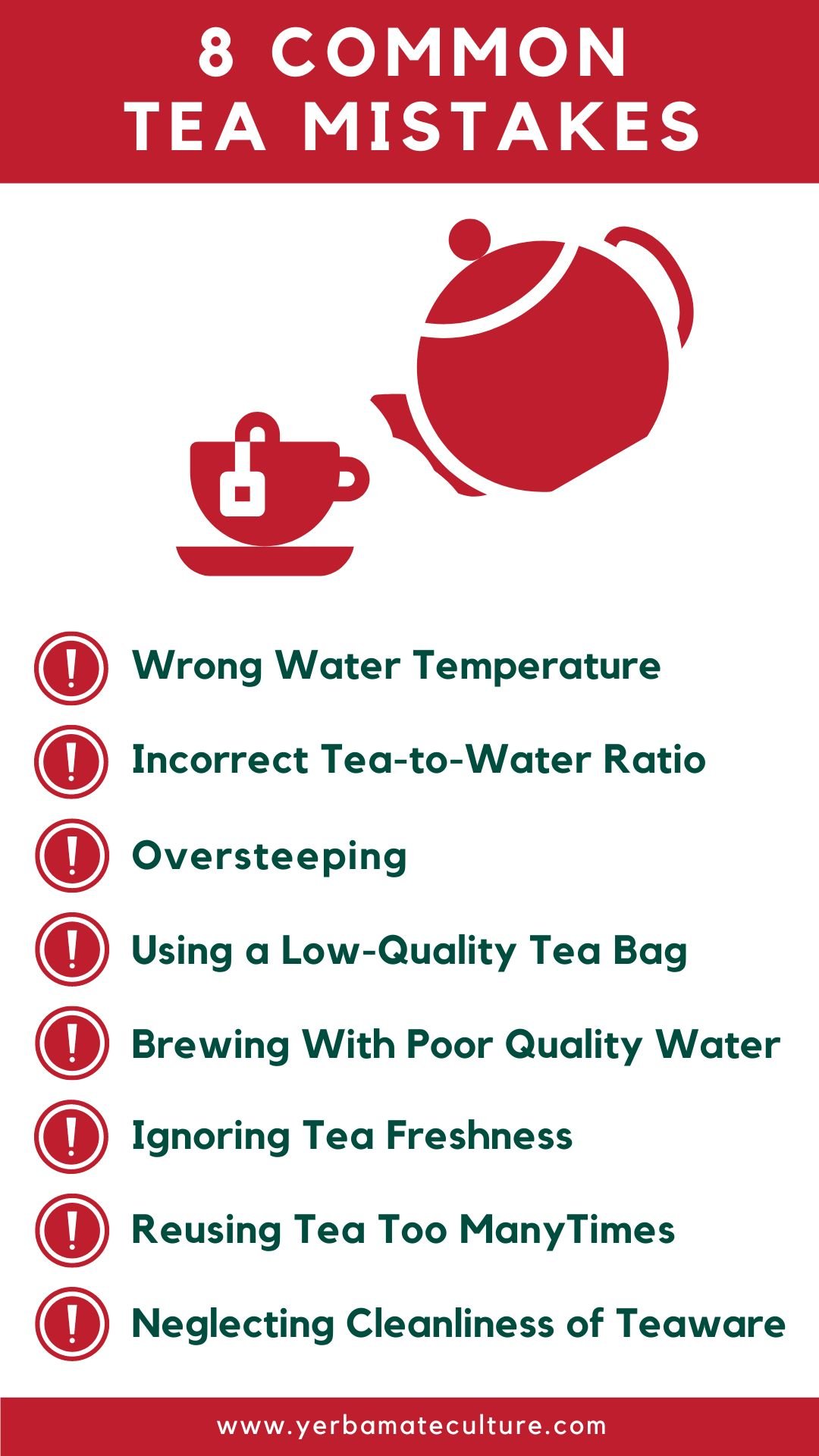
1. Wrong Water Temperature
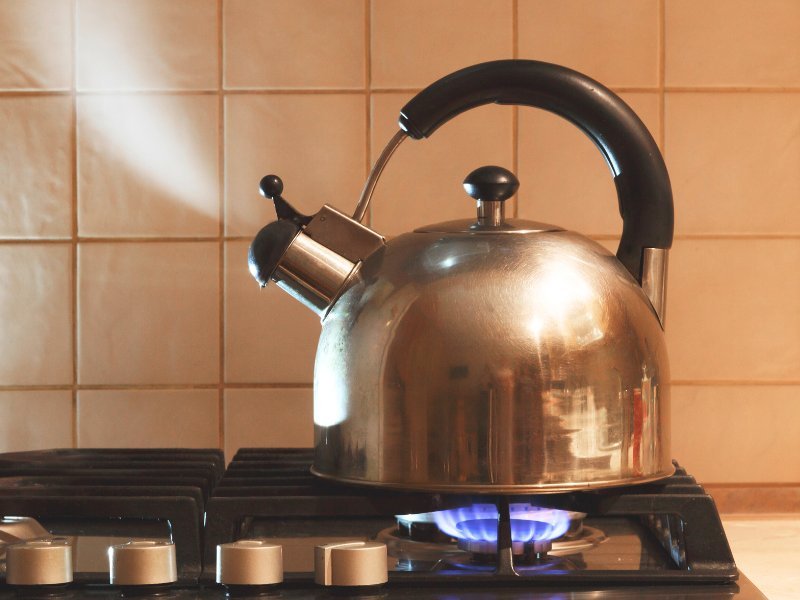
Different teas require different temperatures.
For example, steeping green teas in boiling hot water will result in a bitter brew. On the other hand, black teas and herbal teas can handle higher temperatures — if the water is not hot enough, you’ll end up having weak and flavorless tea.
How to Avoid?
Using a thermometer or an electric kettle with temperature settings can help you achieve the right temperature.
Here are the recommended brewing temperatures for different types of teas:
- Black Tea — 200°F to 212°F (93°C – 100°C): Black teas are robust and fully oxidized, allowing them to withstand higher temperatures without becoming bitter. The ideal brewing temperature for black tea is around boiling point.
- Green Tea — 150°F to 185°F (65°C – 85°C): Green teas are more delicate and require cooler water to prevent bitterness. Some high-quality Sencha teas should be brewed as low as 150°F (65°C).
- White Tea — 160°F to 185°F (71°C – 85°C) White tea, known for its delicate flavors, also requires a lower temperature to avoid destroying its subtle nuances.
- Oolong Tea — 175°F to 205°F (80°C – 96°C): Oolong teas vary widely in oxidation, from light to dark. Lighter oolongs are best brewed between 175°F and 185°F, similar to green tea, while darker oolongs can handle higher temperatures (185°F to 205°F).
- Pu-erh Tea — 200°F to 212°F (93°C – 100°C): Pu-erh tea, is a robust, fermented type of tea. It can be brewed with water at or near boiling point.
- Herbal Teas (Tisanes) — 212°F (100°C): Herbal teas, which are not true teas but infusions of other plants, generally require boiling water to fully extract their flavors. However, some delicate herbal teas, like those made from flowers, may benefit from slightly cooler water.
Remember, these temperatures are starting points and can be adjusted based on personal preference and specific tea varieties. Experimentation is key to finding the perfect temperature for your preferred brew!
2. Incorrect Tea-to-Water Ratio
Too much tea can make your brew bitter, while too little results in a weak flavor.
This might seem very obvious but it’s actually quite a common mistake to only use one tea bag for brewing a whole pot or pouring loose-leaf tea into an infuser without measuring it.
How to Avoid?
A general rule is to use about one teaspoon of loose-leaf tea (or one tea bag) per six ounces of water. Adjust according to your taste preferences and the type of tea.
3. Oversteeping
Starting tea preparation is an easy task, yet it’s all too common to be diverted by other activities, leading to the tea being steeped for too long.
Steeping tea leaves in water for too long can extract bitter compounds.
How to Avoid?
Use a timer to avoid oversteeping.
Here are the recommended steeping times for different types of teas:
- Black Tea — 3 to 5 mins: Typically, black tea should be steeped for about 3 to 5 minutes. If you prefer a stronger taste, you can steep for the longer end of this range.
- Green Tea — 1 to 3 mins: Green tea is best steeped for a shorter time. Oversteeping green tea can result in a bitter taste due to the extraction of tannins.
- White Tea — 4 to 5 mins: White tea often requires a longer steeping time than green tea, about 4 to 5 minutes, due to its delicate nature. This longer steeping time allows the subtle flavors to fully develop without becoming bitter.
- Oolong Tea — 1 to 5 mins: Oolong tea varies widely in oxidation and can be steeped anywhere from 1 to 5 minutes. Lighter oolongs may require less time, while darker, more oxidized oolongs can benefit from a longer steep.
- Pu-erh Tea — 3 to 5 mins: Pu-erh tea, especially when compressed, can be steeped for a varied range of times, typically between 3 to 5 minutes. Pu-erh teas can often withstand multiple steepings, with flavors evolving with each steep.
- Herbal Teas (Tisanes) — 5 to 10 mins: Herbal teas usually require the longest steeping time, up to 10 minutes, as this allows for the full extraction of flavors and medicinal properties from the herbs.
4. Using a Low-Quality Tea Bag
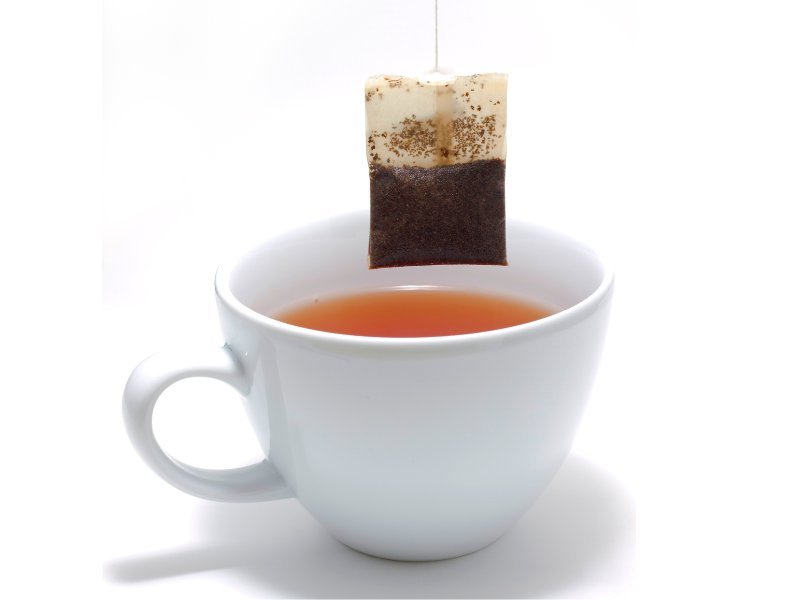
Many commercial tea bags contain tea dust or fannings, which are the leftovers from processing higher-quality leaves. In addition, these teas are usually not fresh as they have been going through a long chain of logistics and standing in warehouses for months.
Using this type of low-grade product often results in a less flavorful and more astringent cup of tea.
How to Avoid?
Avoid cheap supermarket brands. Instead, choose premium loose-leaf tea or high-quality, whole-leaf tea bags that provide a significantly better and more enjoyable tea experience.
Check out my list of 11 Best Online Tea Shops to find fresh, premium teas!
5. Brewing With Poor Quality Water
The water quality significantly affects the tea’s flavor. Tap water with high chlorine content or other impurities can impart off-flavors.
Using fresh spring water or filtered water can make a big difference in your tea experience!
How to Avoid?
The best type of water for brewing tea is typically fresh, clean, and contains a balanced mineral content.
Here are some key characteristics to look for:
- Spring Water: This is often considered the ideal water for brewing tea due to its natural balance of minerals, which can enhance the flavor of the tea without overpowering it.
- Filtered Water: If spring water is not available, filtered tap water is a good alternative. A good quality filter can remove impurities such as chlorine and heavy metals that can negatively impact the taste of the tea.
- Soft Water: Soft water, which is low in minerals, is generally preferable to hard water, which has high mineral content. Hard water can make tea taste dull or muddy and can also lead to the formation of scale deposits in tea kettles and pots.
- Neutral pH: Water with a neutral pH (around 7) is ideal for tea brewing. Water that is too acidic or too alkaline can alter the flavor of the tea.
- Freshness: Water should be fresh and free from any off-odors or flavors. Stale water, even if it’s filtered, can detract from the quality of the tea.
- Oxygen-Rich: Oxygen plays a crucial role in bringing out the full flavor of the tea. It’s recommended to use water that hasn’t been boiled previously, as boiling reduces the oxygen content.
6. Ignoring Tea Freshness
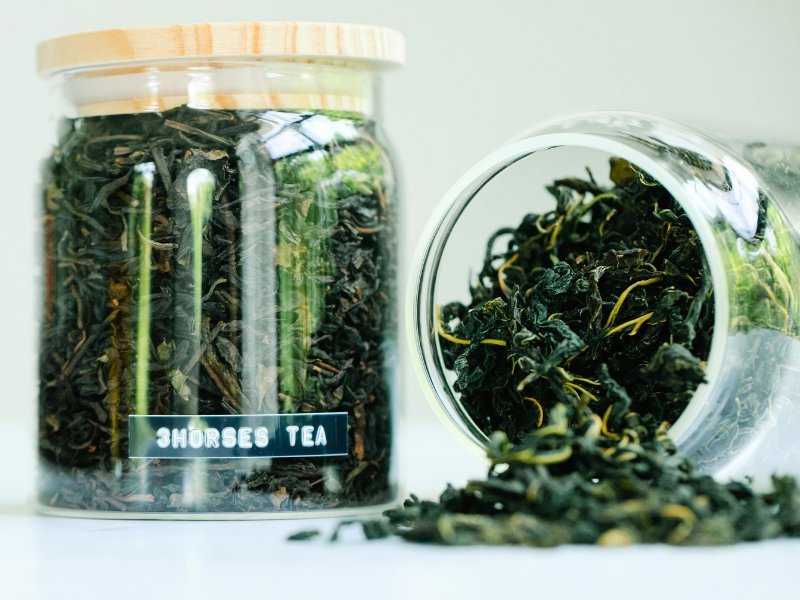
Like any other herb, tea loses its flavor over time and can become stale.
Exposure to light, air, moisture, and strong odors can degrade the quality of tea. Storing tea in a clear glass jar on a sunny countertop, for example, can lead to rapid deterioration in flavor.
How to Avoid?
Tea should be stored in an airtight container made of a non-reactive material like tin or dark glass, and kept in a cool, dark, and dry place.
7. Reusing Tea Leaves Too ManyTimes
While some high-quality teas, particularly certain oolongs and pu-erhs, are meant to be steeped multiple times, most teas lose their flavor after the first or second steep.
How to Avoid?
Know your tea type and its steeping capacity.
Tea bags should usually be steeped only once while most high-quality loose-leaf teas can steeped 2 or 3 times. Certain oolong teas can be steeped up to 5 times and pu-erh teas as many as 10 times.
8. Neglecting the Cleanliness of Teaware
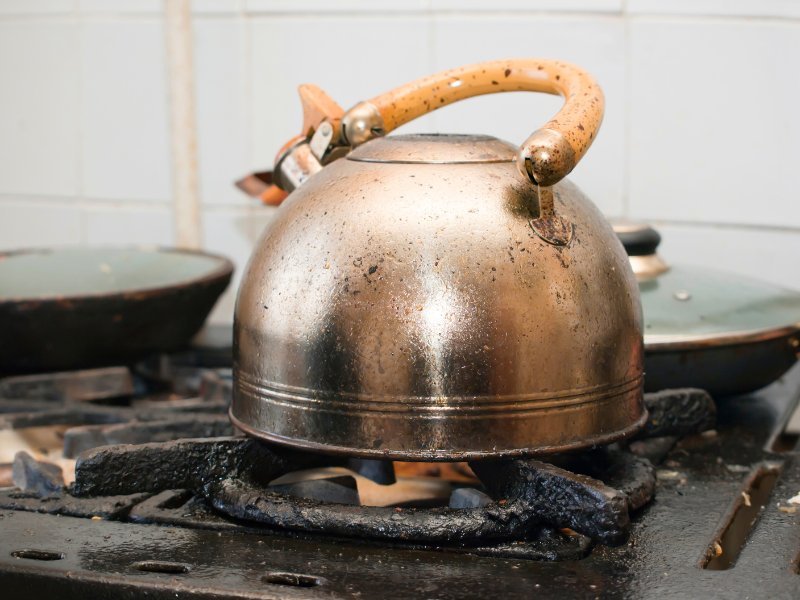
In addition to using fresh and clean water, it’s important to keep your electric or stovetop kettle clean. Rust, stains, and residues from previous brews will negatively affect the taste of your tea. This is especially true when brewing different types of teas with the same teaware.
You don’t want your delicate green tea to taste like yesterday’s black tea, right?
How to Avoid?
Regular cleaning of teapots, infusers, and cups is essential for a pure flavor profile.
Here are some tips for keeping different types of teaware clean:
- Ceramic or Porcelain Teapots and Cups:
- Rinse with hot water after each use to remove tea residue.
- For deeper cleaning, use a mild detergent and warm water. Be sure to rinse thoroughly to remove any soap residue.
- For stubborn stains or tannin build-up, fill the pot with a mixture of warm water and baking soda or white vinegar. Let it sit for a few hours, then rinse thoroughly.
- Avoid using abrasive scrubbers, which can damage the surface.
- Glass Teaware:
- Glass teaware can be cleaned similarly to ceramic, using hot water and mild detergent.
- Glass is prone to water spots, so drying with a soft cloth after washing can help maintain its clarity.
- For hard water stains, use white vinegar to clean, then rinse thoroughly.
- Cast Iron Teapots:
- Do not use soap or detergent, as it can break down the seasoned interior of the teapot.
- Rinse with warm water and gently wipe the inside with a soft cloth.
- Dry thoroughly after each use to prevent rust. Make sure to dry both the inside and the outside.
- If rust develops, gently scrub the area with a soft brush, rinse, and re-season the pot by applying a light coating of vegetable oil.
- Stainless Steel Teapots and Infusers:
- Use hot water and a mild detergent for regular cleaning.
- For mineral build-up, soak in a mixture of vinegar and water, then rinse thoroughly.
- Stainless steel can tolerate more vigorous scrubbing compared to other materials if necessary.
- Clay Teapots (like Yixing):
- Traditionally, Yixing pots are not washed with soap as they are porous and absorb flavors.
- Rinse with hot water after each use and gently scrub with a soft brush if needed.
- Allow the teapot to air dry completely before storing.

